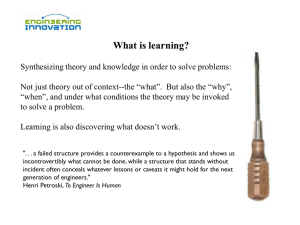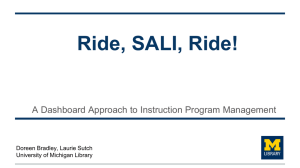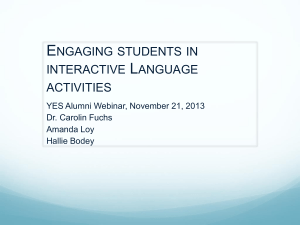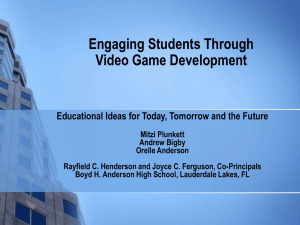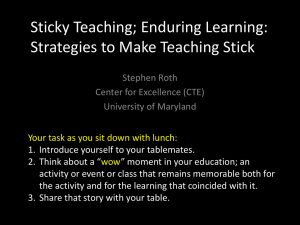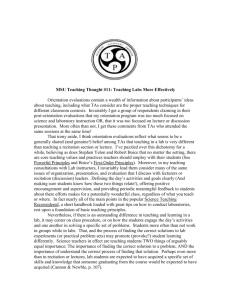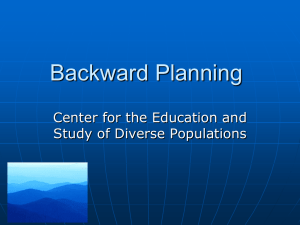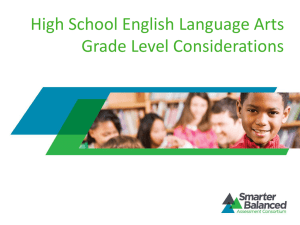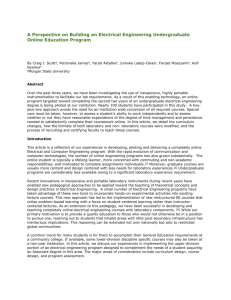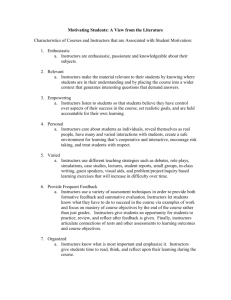Faculty Engagement - Public - Teaching and Learning Excellence
advertisement
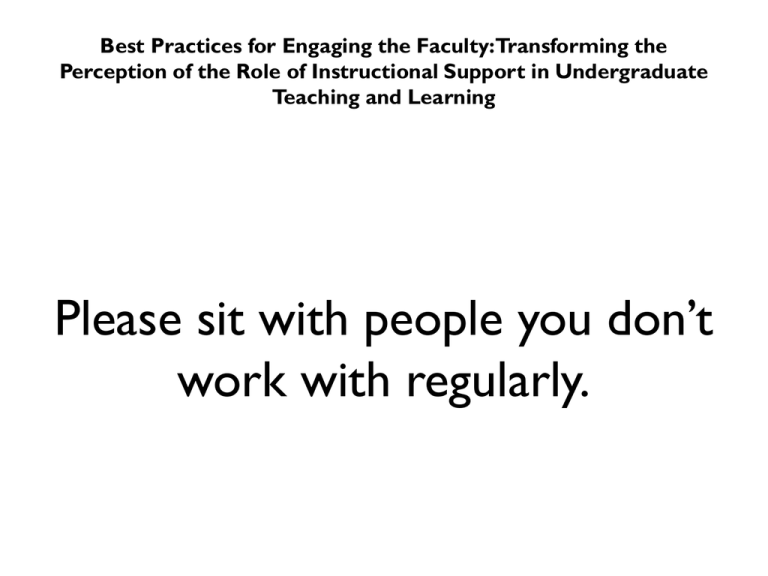
Best Practices for Engaging the Faculty:Transforming the Perception of the Role of Instructional Support in Undergraduate Teaching and Learning Please sit with people you don’t work with regularly. Best Practices for Engaging the Faculty: Transforming the Perception of the Role of Instructional Support in Undergraduate Teaching and Learning Deborah Helman, Ryan Kershner, Amy Kindschi, Diana Wheeler, Paul Oliphant, Lia Vellardita UW-Madison,Teaching & Learning Symposium, May 25, 2011 In this session: • • • • Background and Introduction Team Discussions Large Group Discussion What Next? Background & Opportunity • Transforming undergraduate engineering education Engineering Beyond Boundaries (EB2) • Building on successful initiatives Technology-Enhanced Learning (TEL) Projects • Harnessing new and emerging trends • Capitalizing on personnel changes • Leveraging the physical infrastructure Image source: National Academies Press Wendt Commons • One “common” place to find support • Expanded support for teaching and technology-enhanced learning • A place for new collaborations & partnerships New Support Model to Engage Faculty Guiding Principles: •It’s all about the students •Create synergy, improve efficiency •Partner with faculty & instructors to foster innovation based on best pedagogical practices •Leverage support locally and globally Early Successes • Improved access to support • Continued to drive innovation • Streamlined the service model • Increased agility and responsiveness • Coordinated exploration efforts Desired Outcomes • Increase & support faculty engagement in innovation in engineering education • Support application of sound pedagogical practices informed by education research • Facilitate knowledge transfer of best practices and peer to peer interaction • Foster a community of practice • Adopt evidence-based quality measures to guide course design and delivery • Sustain and scale initiatives to impact as broad a cross-section of the CoE as possible Types of Faculty & Instructors 1. “Entrepreneurs” or “early adopters” 2. “Second wave” or “risk aversives” 3. “Careerists” or “reward seekers” 4. “Reluctants” Hagner, P.R. and Schneebeck, C.A. (2001) Engaging the faculty, p. 1-12 In: Barone, C. A., & Hagner, P. R. Technology-enhanced teaching and learning: Leading and supporting the transformation on your campus EDUCAUSE leadership strategies, no. 5. San Francisco, Calif: Jossey-Bass. Hagner, P.R. (2001) Interesting practices and best systems in faculty engagement and support. Educause NLII White Paper. Final Report. 31 pages. Rogers, E.M. (1995) Diffusion of Innovations (4th Ed.), Free Press. Engagement methods to date • Involved faculty in setting directions • Proactively contacted faculty • Use existing forums to communicate • Integrated Wendt Commons services into RFP process for Engineering Beyond Boundaries • Prototyping a method for knowledge transfer via short videos of faculty and instructors • Developing marketing materials Challenges with faculty engagement Image: University Communications, UW Madison • Engaging faculty and instructors as collaborators / partners • Establishing a new identity • Marketing • Developing an effective feedback mechanism Your Turn • • • • Background and Introduction Team Discussions Large Group Discussion What Next? Question: Within your team, what success-stories or strategies can you share with each other for engaging with faculty to improve teaching & learning support for a class?

